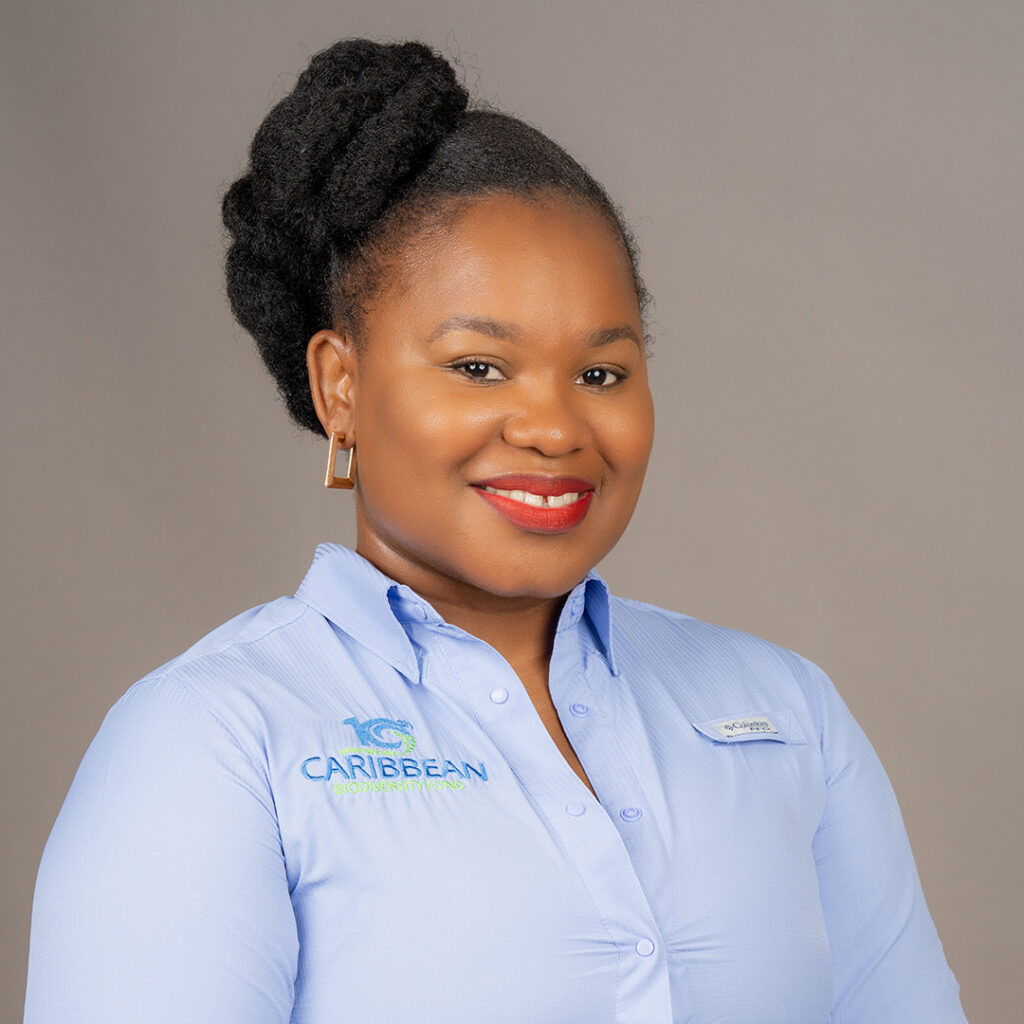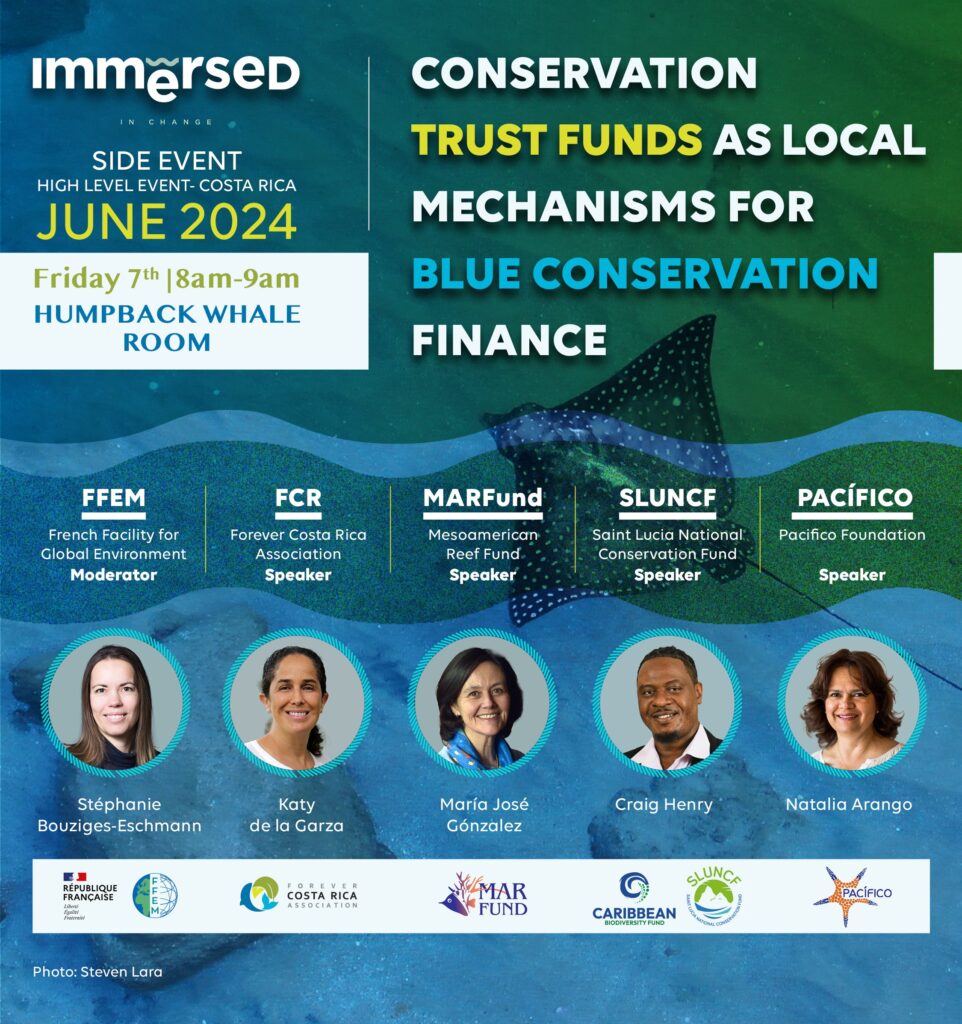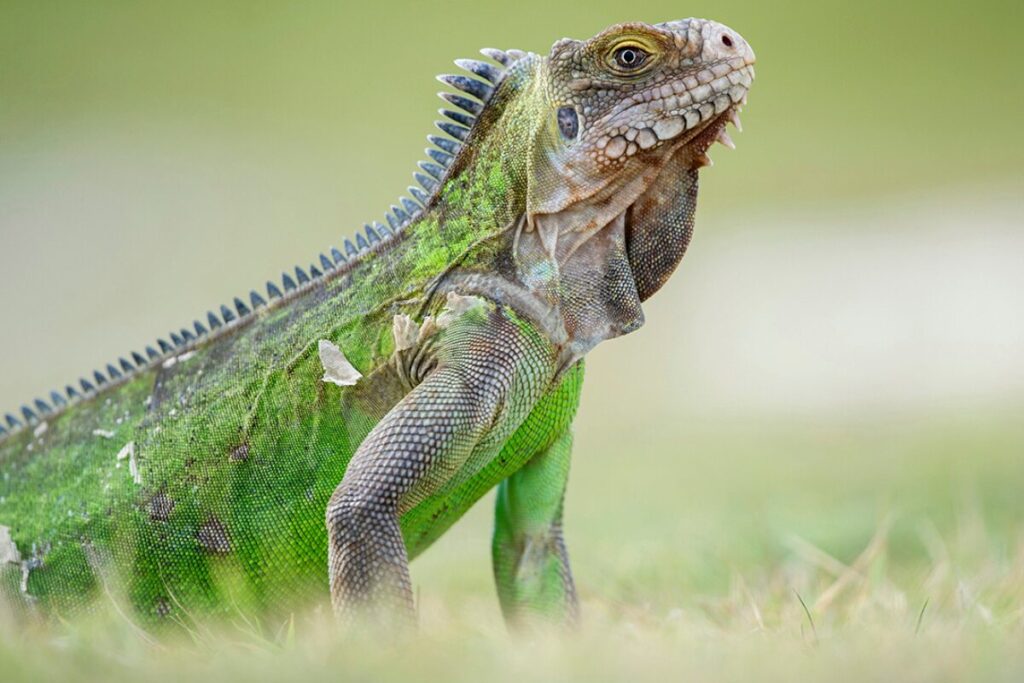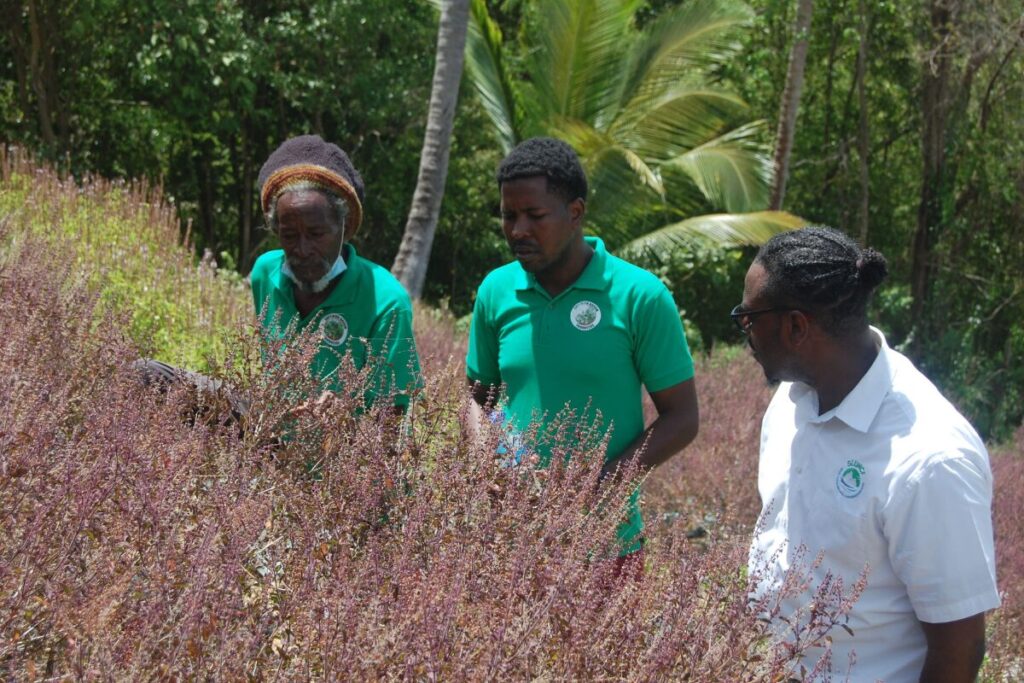According to recent estimates, the Caribbean mangroves, which emerged 50 million years ago, might disappear in less than a century due to deforestation.
Mangroves are crucial ecosystems, especially in climate change mitigation and adaptation. They pull carbon down from the atmosphere into their trunks and roots. Additional carbon is stored in mangrove sediments. This carbon may be stored in the soils for hundreds up to thousands of years. With rising temperatures affecting every country across the world, it has never been more important to keep our mangrove systems intact as they can help with our battle to keep global temperatures within the 1.5 degrees target.
Mangroves also help with climate adaptation which is incredibly valuable to small island developing states in the Caribbean that are particularly vulnerable to extreme weather events such as hurricanes. “As mangroves build soils that hold carbon from the atmosphere they accrete land—moving up to keep pace with rising sea levels—which reduces flood events for coastal communities. Moreover, mangrove trees which can grow to extraordinary heights, buffer wind and wave energy when hurricanes and storm surges hit to protect coastal communities,” said Steve Canty, Marine Conservation Program Coordinator at the Smithsonian National Museum of Natural History during a recent Caribbean Biodiversity Fund (CBF) event.
Caribbean mangroves comprise close to 26% of the global mangrove cover but unfortunately have declined by 24% in the past 25 years.—United Nations Environment Programme (UNEP)
Due to their close relationship with other ecosystems, such as coral reefs and seagrass beds, mangroves and the ecosystem services they provide are the conservation pillars of coastal ecosystems. Today, mangroves, coral reefs and other coastal ecosystems in the Caribbean provide an estimated value of nearly $15 billion annually in fisheries, tourism recreation and carbon sequestration. Mangroves and seagrass beds together provide around $6.7 billion in ecosystem service benefits. Mangroves of the Wider Caribbean region (Gulf of Mexico, Caribbean Sea and North Brazil Shelf Large Marine Ecosystems) comprise close to 26% of the global mangrove cover but unfortunately have declined by 24% in the past 25 years. With such varied benefits, why are mangroves disappearing three to five times faster than overall global forests?
Although climate change and variability contribute to their decline, the greater threats to mangroves disappearance are largely anthropogenic, as they occupy prime real estate and are easily accessible for fuel. According to the OECS, the major threats to mangrove in the Caribbean are as follows:
- Tourism is one of the mainstays of the Caribbean islands’ economies and mangroves’ proximity to other tourist attractions, such as coral reefs, shallow waters and sandy beaches, makes them prime real estate for resort, golf course and marina development. Other competing uses include urban development and agriculture or shrimp-pond construction.
- Lack of Public Concern – mangrove ecosystems are generally regarded as mangrove swamps and a health threat which should be eradicated. These swamps are seen as barren wastelands full of bacteria and breeding grounds for mosquitoes and are targeted for landfills, solid waste disposal, and deforestation.
- Mangroves are susceptible to pollution, particularly oil and other petroleum compounds which causes mortalities of mangrove trees, roots, and associated fauna. Other land based pollutants include sewage, toxic minerals, urban runoff, pesticides, and herbicides. These pollutants have persistent effects on mangrove growth and production.
- Mangrove trees are often exploited as a source for wood. They are typically used for firewood, construction wood, wood chip and pulp production, charcoal production, and animal fodder. Unregulated use leads to overharvesting, threatening the future of the forests.
- Hydrological modification can affect the health of mangroves. Dams and irrigation decrease the amount of water reaching mangrove swamps, thus changing the salinity level of water in the swamps. Increased erosion due to upland deforestation increases the amount of sediment in rivers, which can overwhelm the mangrove’s filtering capability. These threats can cause dieback and threaten the survival of the forest.
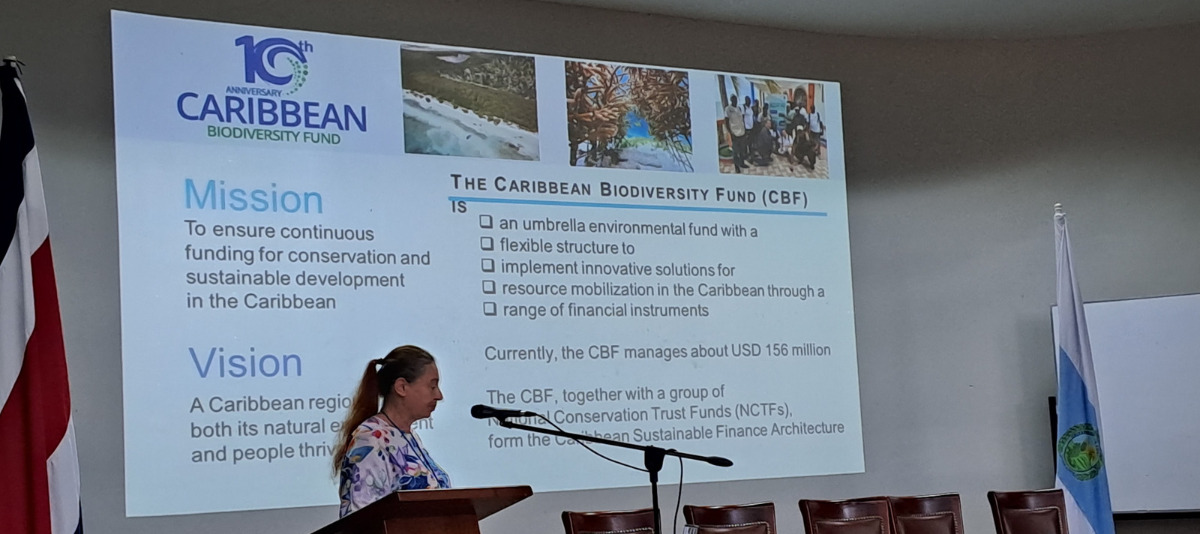
The CBF Promotes Caribbean Mangrove Restoration at the Tropical Restoration Network Workshop
In the ever-evolving landscape of climate adaptation in the Caribbean, the ecosystem-based adaptation (EbA) approach is among the leaders. This approach has not only proven highly effective but has also become a catalyst for the conservation and restoration of our natural ecosystems while nurturing sustainable livelihoods. Dr. Ulrike Krauss, the program manager for Climate Change/EbA Facility at the Caribbean Biodiversity Fund, recently shared invaluable insights from successful EbA projects. Her knowledge was imparted to a diverse audience of over 118 participants hailing from 27 different countries at the Tropical Restoration Workshop in Costa Rica focused on the restoration of mangroves and seagrass beds.
The CBF is an umbrella environmental fund with remarkable flexibility in its structure. It’s the engine driving innovative conservation solutions through an array of financial instruments. The CBF manages USD 156 million across three key programs: the Conservation Finance program, a Climate Change program, with a specific emphasis on Ecosystem-based Adaptation (EbA), and the Nature-based Economies program, with a spotlight on the Circular Economy.
The numbers speak volumes; the CBF EbA Facility has already awarded funding for 26 projects through three Calls for Proposals and they’re currently evaluating submissions from the fourth call. These projects are doing more than just targeting mangrove restoration; they’re also addressing pressing local concerns. Think solid waste management in Jamaica, charcoal production in Haiti, and even beekeeping in St. Vincent & the Grenadines. The CBF’s EbA Facility is a major contributor to the financial backbone behind conservation and coastal or marine ecosystem management projects, paving the way for Caribbean communities and economies to adapt resiliently to the ever-present challenges posed by climate change.
Lessons Learned from Mangrove Restoration by the EbA Facility
There’s a hidden recipe for the success of the CBF’s EbA projects: a perfect blend of capacity-building, community engagement, and collaboration. The secret ingredient? Contracting local consultants whenever feasible. But that’s not all— the real magic happens when we involve community members right from the initial planning stages, making them an integral part of as many activities as possible. This approach fosters an undeniable sense of ownership among every member, turning them into champions for the cause and significantly boosting the chances of the projects’ success.
The beauty of collaboration knows no bounds when it comes to conserving and protecting biodiversity within the Caribbean. Whether it’s at the local, national, or regional level, partnerships bring together invaluable experience and key stakeholders. They’re not just about implementing best practices; they’re the bridge that takes us from ideas to policies and regulations. What’s even more fascinating is that the sustainable partnerships forged during these projects extend far beyond their initial timelines. They create lasting opportunities for the Caribbean Biodiversity Fund to make its mark on significant events, like the recent participation in the Tropical Restoration Network Workshop and last year’s COP27.
Future Collaboration and Knowledge Exchange
The CBF and TRN workshop organizers agreed to keep each other updated on opportunities, particularly with respect to roll out carbon accounting in Caribbean ecosystem restoration.
Now, imagine a Caribbean where its lush landscapes, flora and fauna are not just preserved but thriving, where vibrant ecosystems coexist harmoniously with sustainable development. It’s not just a dream; it’s a reality in the making, thanks to the work of the CBF and its partners. An impressive USD 16 million has been granted by the CBF’s EbA Facility to implement a staggering 27 projects in 11 countries so far. But that’s not all, an additional 11 Caribbean countries are reaping benefits from the CBF’s USD 96 million Endowment Fund through impactful partnership agreements. As the CBF diligently pursues its mission of ensuring continuous funding for conservation and sustainable development throughout the Caribbean, there are more exciting projects and initiatives on the horizon. Moreover, the CBF and TRN workshop organizers have forged a strategic alliance with a focus on pioneering carbon accounting in Caribbean ecosystem restoration. The future is bright for biodiversity conservation and protection in the Caribbean, and the CBF is leading the way.
About the Tropical Restoration Network
This Tropical Restoration Network came together because of the growing interest in restoration of blue carbon habitats, mainly mangroves and seagrasses, in the tropical and subtropical regions of the American continent. The network had its inception following the success of the Mangrove Restoration Workshop held October 2021 on the Dutch Caribbean island of Bonaire.
One of the outcomes of this workshop was the interest in forming a regional network to continue developing and expanding the networking, learning and collaboration opportunities for the socioecological restoration of blue carbon habitats in the region. Learn more about the Tropical Restoration Network..
About the Caribbean Biodiversity Fund
The Caribbean Biodiversity Fund (CBF) was established in 2012 to create reliable, long-term funding for conservation and sustainable development in the Caribbean region. The regional umbrella environmental fund uses a flexible structure to implement innovative solutions and consolidate resource mobilization throughout the Caribbean with a range of financial instruments.
Currently, the CBF has 3 programs, the Conservation Finance Program, based on an endowment fund, Climate Change Program, focused on Ecosystem-based Adaptation (EbA) strategies, and Nature-based Economies Program with an Advancing Circular Economy focus. Learn more about the Caribbean Biodiversity Fund..


